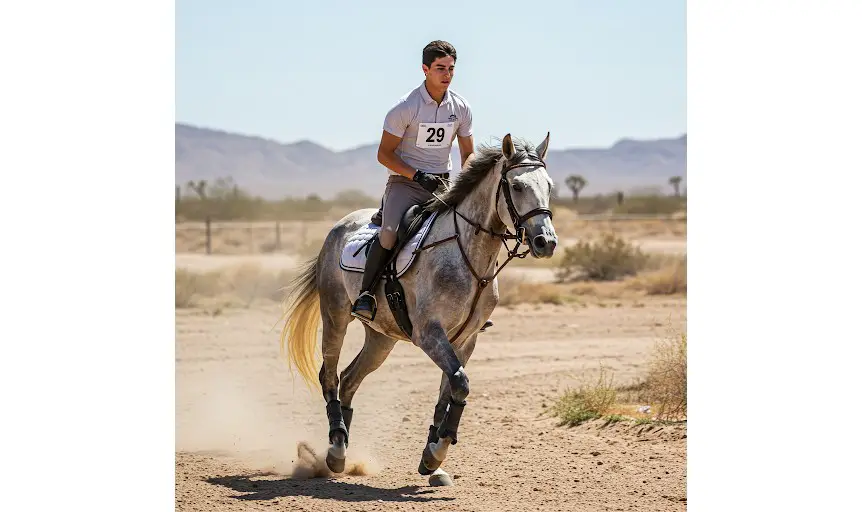
Exploring the Thrilling World of Equine Endurance Riding
Equine Endurance Riding is a sport that challenges both horse and rider over long distances. This competitive event, testing stamina, strategy, and partnership, has a rich history and a global presence. From its origins to its modern-day popularity, Equine Endurance Riding showcases the extraordinary bond between humans and horses. In this post, we delve into its fascinating history, rules, and global reach while exploring its significance in various societies.
The Origin and History of Equine Endurance Riding
The roots of Equine Endurance Riding trace back to ancient civilizations. Historically, horses were used for transportation, warfare, and communication over vast terrains. The endurance of both horse and rider was vital for survival. In the 19th century, endurance rides began to emerge as organized competitions, notably in North America and Europe.
One of the earliest endurance events was the “Great American Horse Race” in 1908. Riders traversed over 1,800 miles from Evanston, Wyoming, to Goldfield, Nevada. This event highlighted the resilience and capability of both the horse and the rider. The sport’s modern form evolved during the mid-20th century, with the establishment of standardized rules and structured competitions.
The Fédération Équestre Internationale (FEI) officially recognized endurance riding in 1978. Since then, the sport has grown into an internationally respected discipline. Today, it remains a testament to the enduring legacy of equestrian culture.
Global Popularity of Equine Endurance Riding
Equine Endurance Riding enjoys significant popularity worldwide. It is especially prominent in regions with a strong equestrian tradition. The Middle East, including countries like the United Arab Emirates and Saudi Arabia, is a hub for elite endurance events. The desert terrain and cultural connection to horses make it an ideal location.
In Europe, countries such as France, Spain, and Portugal host prestigious endurance competitions. These events often draw participants from across the globe. North America also boasts a vibrant endurance riding community, particularly in the United States and Canada. The Tevis Cup, held annually in California, is among the oldest and most respected endurance rides.
The sport’s appeal has extended to Asia, Africa, and Australia. Each region brings unique landscapes and traditions, enriching the global endurance riding experience. This worldwide participation underscores the universal admiration for equine endurance sports.
How Amateur Equine Endurance Riding is Played
Amateur riders are integral to the sport of Equine Endurance Riding. Participation begins with shorter rides, often referred to as Limited Distance (LD) rides. These events cover distances of 25 to 30 miles and are designed to introduce newcomers to the sport.
Youth involvement is encouraged through educational programs and junior divisions. Many schools and community groups organize endurance events tailored for young riders. These initiatives foster a love for equestrian sports from an early age.
Preparation for amateur endurance rides involves physical conditioning, proper nutrition, and regular veterinary check-ups for the horse. Riders also invest time in learning navigational skills and pacing techniques. These foundational practices help amateurs build confidence and progress to more challenging events.
Professional Leagues and Competitions
Professional Equine Endurance Riding features a variety of leagues and championships. The FEI oversees international competitions, including the World Endurance Championships. These events attract top riders and horses from around the globe.
The Middle East hosts some of the most lucrative endurance races, with substantial prize money and prestige. The Sheikh Mohammed Bin Rashid Al Maktoum Endurance Cup in Dubai is a notable example. Similarly, the Sultan’s Cup in Oman is a highlight of the endurance calendar.
In Europe, the European Endurance Championship is a premier event. National leagues also thrive in countries like France and the United Kingdom. The sport’s professional scene combines athleticism, strategy, and cultural celebration, making it a spectacle for enthusiasts and spectators alike.
The Social and Political Significance of the Sport
Equine Endurance Riding holds profound social and political significance in many regions. In the Middle East, it symbolizes cultural heritage and the deep connection between humans and horses. Events often serve as platforms for diplomatic engagement and cultural exchange.
In rural communities, endurance riding promotes economic growth. Local businesses benefit from tourism and event-related activities. Additionally, the sport fosters inclusivity by uniting people from diverse backgrounds through shared passion.
Environmental awareness is another important aspect. Many endurance rides emphasize sustainable practices and the preservation of natural landscapes. This focus aligns with global efforts to combat climate change and protect ecosystems.
Rules and Regulations of Equine Endurance Riding
The rules of Equine Endurance Riding prioritize the welfare of the horse and fair competition. Rides are divided into phases, with mandatory veterinary checks at the start, during, and after the ride. These checks ensure the horse’s fitness and recovery.
Distances vary, ranging from 25 to 100 miles. Riders must complete the course within a specified time while maintaining the horse’s health. Any signs of distress or lameness result in disqualification.
Pacing, navigation, and strategy are crucial. Riders must balance speed with the horse’s stamina and condition. Water and rest breaks are strategically planned to optimize performance.
Teamwork is essential in endurance riding. The rider’s ability to read the horse’s condition and make adjustments is critical. This partnership epitomizes the sport’s essence and highlights the mutual trust between horse and rider.
Conclusion
Equine Endurance Riding is more than a sport; it is a celebration of resilience, partnership, and tradition. Its rich history, global appeal, and societal significance make it a unique and inspiring discipline. From amateur enthusiasts to professional leagues, the sport continues to captivate audiences worldwide. Whether traversing deserts, forests, or mountains, Equine Endurance Riding embodies the timeless bond between humans and horses.




